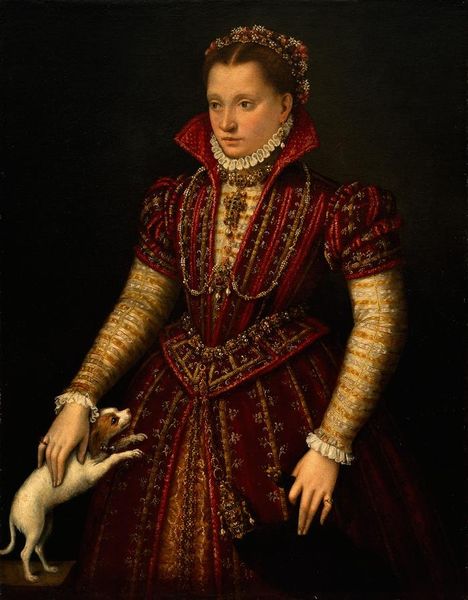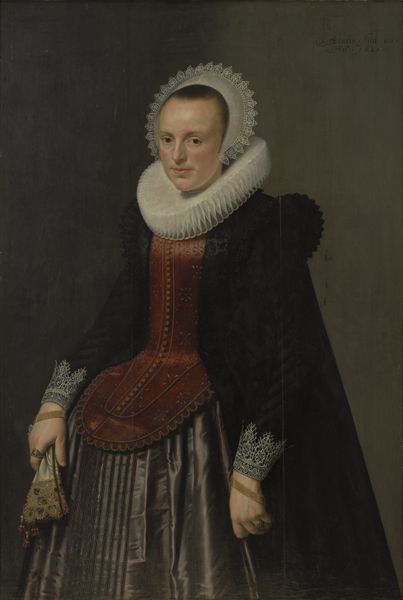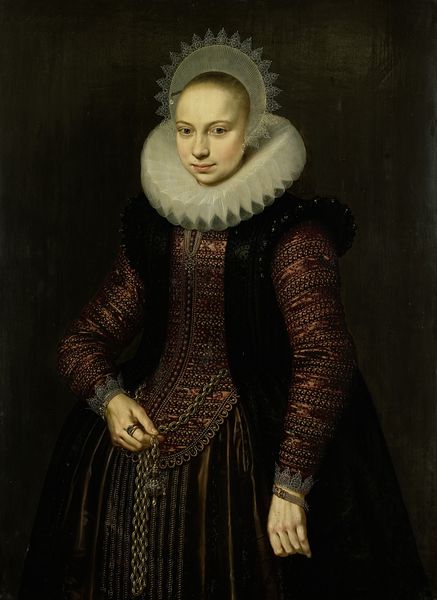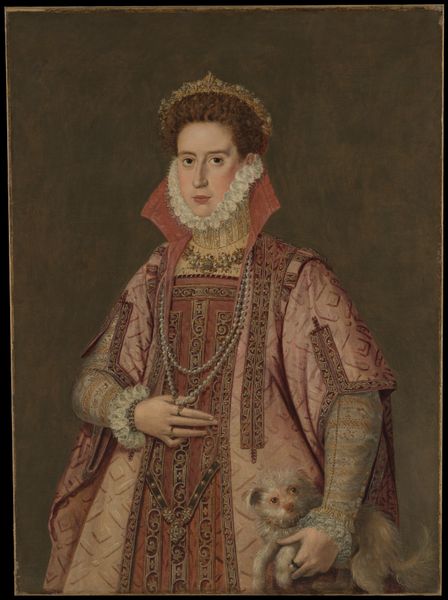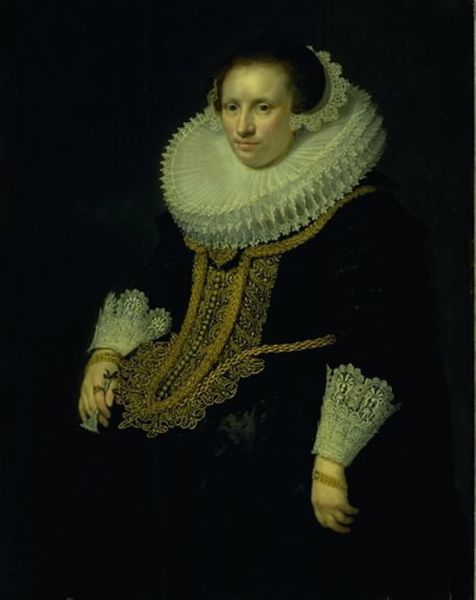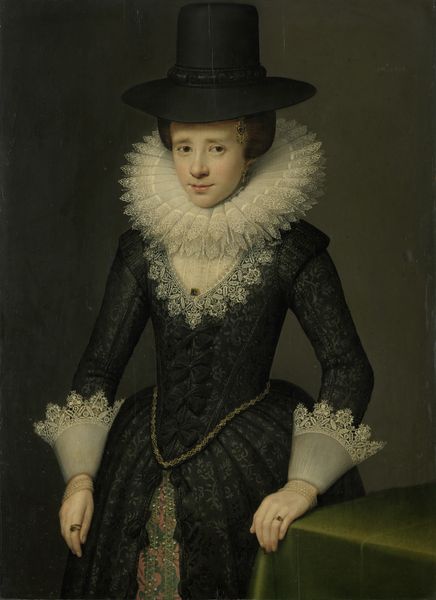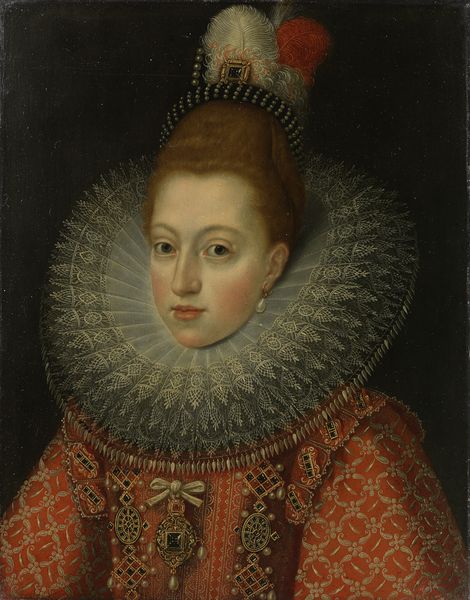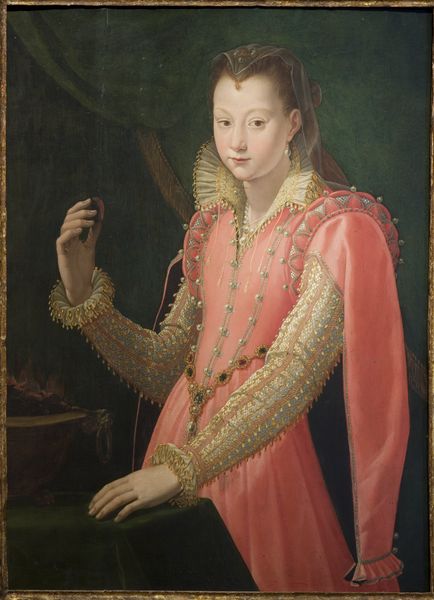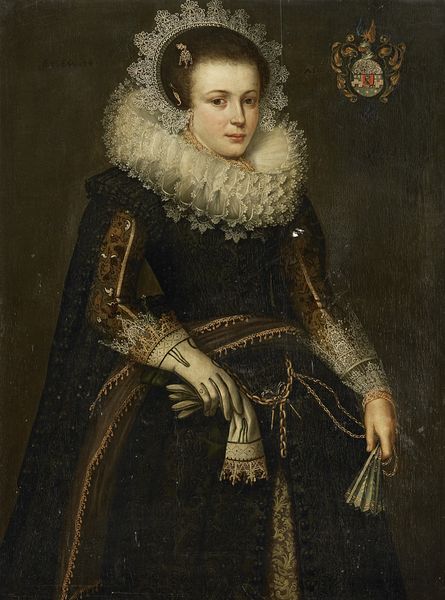
painting, oil-paint
#
portrait
#
painting
#
oil-paint
#
mannerism
#
history-painting
#
academic-art
#
portrait art
Dimensions: height 73.5 cm, width 65 cm, depth 7.5 cm
Copyright: Rijks Museum: Open Domain
Editor: Giambattista Moroni's "Portrait of a Young Woman," likely painted between 1560 and 1578, strikes me as both elegant and somewhat restrained. It's rendered in oil paint and her elaborate dress in a striking red contrasts beautifully with the muted background. How do you interpret this work from a formalist perspective? Curator: The formal elements are indeed compelling. Consider first the composition: the artist presents a tightly framed, symmetrical arrangement. Notice the figure’s stillness and the limited range of hues. The interplay between light and shadow is subtle yet strategic, particularly how it defines the textures of the fabric and skin. Do you observe anything unique about the paint application? Editor: I see it now that you mention it. The layers of oil paint give a tactile quality to the clothing but a rather smooth finish on the woman’s face. Is that a common technique? Curator: Precisely. Moroni appears to modulate texture to draw the viewer's attention. Note the rigid pleats of the ruff framing the subject’s face. Her gaze, combined with this focal point, directs our vision. What does the treatment of line and form communicate to you? Editor: The lines are so precise, aren't they? Creating form through details, there is almost something architectural to the way the ruff and gown create a structure around her. But there's also a stillness, as I mentioned, that leaves me pondering her thoughts. Curator: Indeed. That architectural construction is noteworthy in the context of Mannerism. This structural rendering and balanced, somewhat static, presence results in an intriguing visual experience. Such calculated form contributes significantly to the overall effect of the portrait. Editor: I see what you mean! Focusing on the form really enriches how I appreciate Moroni’s mastery in constructing a compelling portrait through light, line and balance. Curator: Formal analysis allows one to dissect the intrinsic components. Now you have a different, informed point of entry, to experience not just *what* it is, but *how* it communicates.
Comments
No comments
Be the first to comment and join the conversation on the ultimate creative platform.
